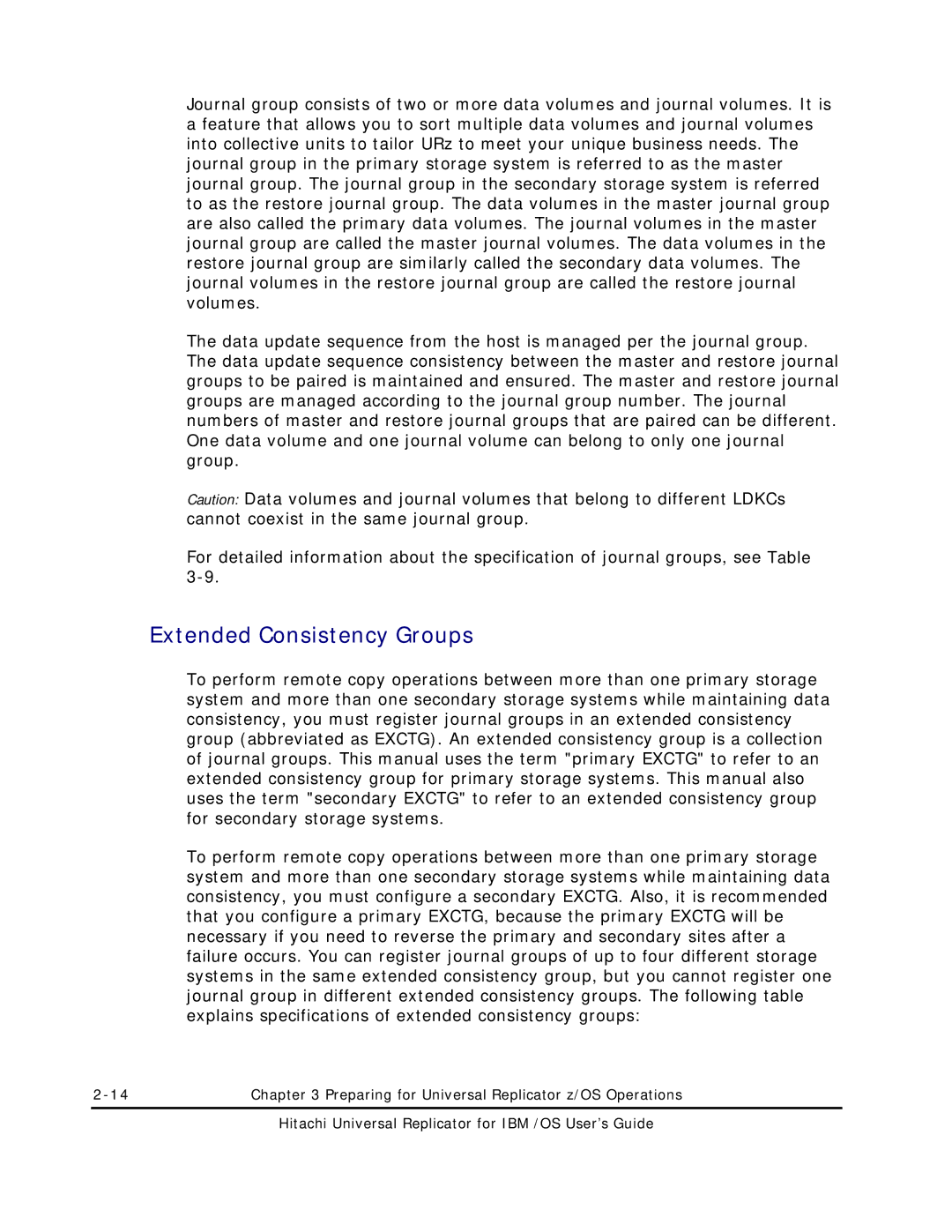Journal group consists of two or more data volumes and journal volumes. It is a feature that allows you to sort multiple data volumes and journal volumes into collective units to tailor URz to meet your unique business needs. The journal group in the primary storage system is referred to as the master journal group. The journal group in the secondary storage system is referred to as the restore journal group. The data volumes in the master journal group are also called the primary data volumes. The journal volumes in the master journal group are called the master journal volumes. The data volumes in the restore journal group are similarly called the secondary data volumes. The journal volumes in the restore journal group are called the restore journal volumes.
The data update sequence from the host is managed per the journal group. The data update sequence consistency between the master and restore journal groups to be paired is maintained and ensured. The master and restore journal groups are managed according to the journal group number. The journal numbers of master and restore journal groups that are paired can be different. One data volume and one journal volume can belong to only one journal group.
Caution: Data volumes and journal volumes that belong to different LDKCs cannot coexist in the same journal group.
For detailed information about the specification of journal groups, see Table
Extended Consistency Groups
To perform remote copy operations between more than one primary storage system and more than one secondary storage systems while maintaining data consistency, you must register journal groups in an extended consistency group (abbreviated as EXCTG). An extended consistency group is a collection of journal groups. This manual uses the term "primary EXCTG" to refer to an extended consistency group for primary storage systems. This manual also uses the term "secondary EXCTG" to refer to an extended consistency group for secondary storage systems.
To perform remote copy operations between more than one primary storage system and more than one secondary storage systems while maintaining data consistency, you must configure a secondary EXCTG. Also, it is recommended that you configure a primary EXCTG, because the primary EXCTG will be necessary if you need to reverse the primary and secondary sites after a failure occurs. You can register journal groups of up to four different storage systems in the same extended consistency group, but you cannot register one journal group in different extended consistency groups. The following table explains specifications of extended consistency groups:
Chapter 3 Preparing for Universal Replicator z/OS Operations |
